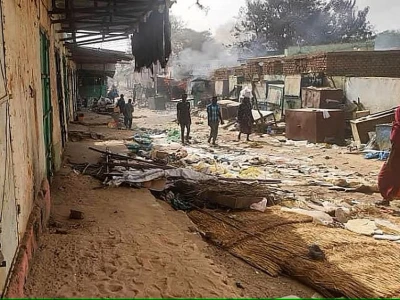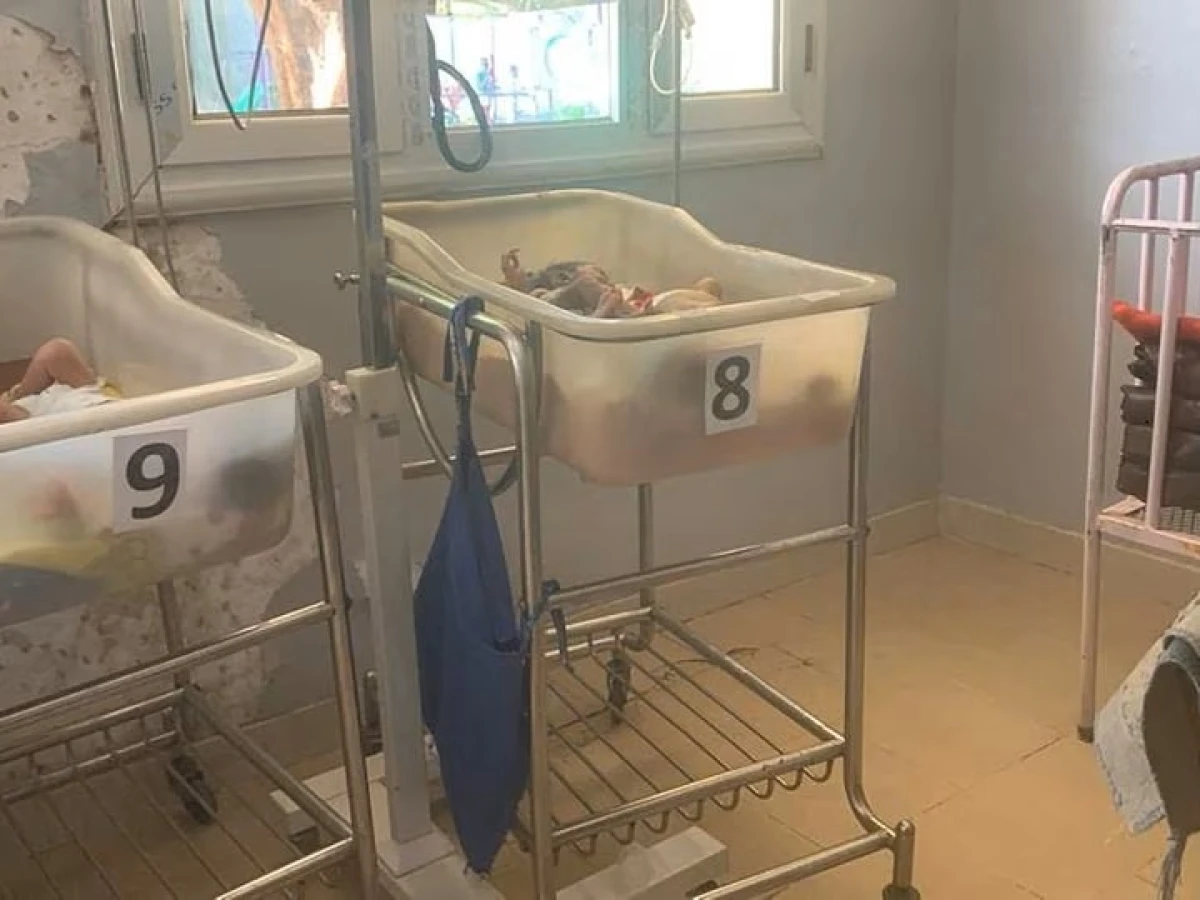
Dozens of babies die in orphanage as Sudan war takes grim toll on Khartoum
“We are losing babies daily,” reads a May 16 Facebook post by Hadhreen, a non-governmental organisation that is helping collect donations for Mygoma.
May 29 (Reuters) - In the days after war erupted in Khartoum, Dr Abeer Abdullah rushed between rooms at Sudan’s largest orphanage, trying to care for hundreds of babies and toddlers as the fighting kept all but a handful of staff away. Children’s cries rang through the sprawling building as heavy gunfire rocked the surroundings, she said.
Then came waves of deaths. There were the infants housed on the upper floors of the state-run orphanage, known as Mygoma. Without enough staff to care for them, they succumbed to severe malnutrition and dehydration, the doctor said. And there were the already-fragile newborns in her medical clinic on the ground floor, some of whom died after developing high fever, she said.
“They needed to be fed every three hours. There was no one there,” said Abdullah, speaking by phone from the orphanage, the cries of wailing babies audible in the background. “We tried to give intravenous therapy but most of the time we couldn’t rescue the children.”
The daily deaths ticked up to two, three, four and higher, Abdullah said. At least 50 children - at least two dozen of them babies - have died at the orphanage in the six weeks since the war broke out in mid-April, according to Abdullah. That includes at least 13 babies who died on Friday, May 26, she said.
A senior orphanage official confirmed those figures and a surgeon who has volunteered at the facility during the war said there had been at least several dozen deaths of orphans. Both said the deaths were mostly of newborns and others under a year old. All three cited malnourishment, dehydration and infections as the main causes.
There were further deaths over this past weekend. Reuters reviewed seven death certificates dated Saturday or Sunday that were shared by Heba Abdullah, an orphan-turned-carer. All cited circulatory failure as the cause of death, and all but one also listed fever, malnutrition, or sepsis as contributing causes.
The scenes of babies lying dead in their cribs have been “terrifying,” Abdullah said. “It is very painful.”
Reuters spoke to eight other people who have either visited the orphanage since the war began or have been in touch with other visitors. All said conditions have deteriorated badly and deaths have spiked.
Among them is Siddig Frini, general manager of Khartoum state’s ministry of social development, which oversees care centres, including budget, staffing and supplies. He acknowledged a rise in deaths at Mygoma, attributing it mainly to staff shortages and recurrent power outages caused by the fighting. Without working ceiling fans and air conditioning, rooms turn stiflingly hot in Khartoum’s baking May weather, and the lack of power makes sterilising equipment difficult.
Frini and the director of the orphanage, Zeinab Jouda, referred questions about the total death toll to Abdullah, Mygoma’s medical chief. Jouda said she was aware of more than 40 deaths, telling Reuters the fighting kept the carers - known as nannies - and other staff away in the early days of the war. As of Friday, May 26, she said that there are ongoing discussions about evacuating orphans out of Khartoum.
Mohammed Abdel Rahman, director of emergency operations at Sudan’s health ministry, said a team is investigating what is happening at Mygoma and will release the results once done.
The area remains dangerous. Late last week, airstrikes and artillery slammed the district where Mygoma is located, according to Abdullah the doctor and two others. Following an explosion at a neighbouring building, babies had to be evacuated from one of the orphanage's rooms, said carer Heba Abdullah.
INVISIBLE VICTIMS OF A LARGER WAR
Mygoma’s dead babies are among the invisible victims of the war in Sudan, Africa’s third-largest country by area. The fighting has killed more than 700 people, injured thousands of others and displaced at least 1.3 million people within Sudan or neighbouring countries, according to the United Nations.
The real death toll is likely to be higher. Many of the health and government offices that would track fatalities in Khartoum, where fighting has been heaviest, have ceased to function. Sudan's health ministry has separately recorded hundreds of deaths in the city of El Geneina in Darfur region, where violence also has flared.
War erupted in Khartoum on April 15between army chief Abdel Fattah al-Burhan and paramilitary Rapid Support Forces (RSF) commander Mohamed Hamdan Dagalo, known as Hemedti. The two had been preparing to sign on to a new political transition to elections under a civilian government. Together they had toppled a civilian government in an October 2021 coup.
On May 20, the two sides signed a seven-day ceasefire agreement to allow the delivery of humanitarian relief. The accord brought some respite from heavy fighting in the Sudanese capital but little increase in aid.
Representatives for the army and RSF didn’t respond to requests for comment.
Sudan, with a population of about 49 million, is among the poorest countries in the world. The fighting has hammered its already stretched healthcare and other infrastructure, including hospitals and airports. Nearly 16 million people were in need of humanitarian assistance before the war began. That figure has now jumped to 25 million, according to the United Nations. More than two-thirds of hospitals in combat areas are out of service, according to the World Health Organization.
Emad Abdel Moneim, general manager of al-Dayat, Sudan’s largest maternity hospital, said hospital staff had to relocate in late April because of the war. He said staff moved a large number of patients but had to leave some behind: those on ventilators and in incubators. Evacuating them would have required well-equipped ambulances, which were unavailable. He said around nine babies died, in addition to an unspecified number of adults in the intensive care unit. Two other sources confirmed some patients were left behind, but said they had no information about deaths.
When asked about the deaths at the maternity hospital, Abdel Rahman, the national health ministry official, said he was unaware of any, and that he doubted patients were left behind and declined to elaborate further.
Underscoring the health fallout on Sudanese of all ages, there have also been deaths at a care centre for the elderly in Khartoum, according to care worker Radwan Ali Nouri. He said five of the elderly residents of the al-Daw Hajoj centre have died due to hunger and lack of care. Nouri shared one photograph of what he said was the covered body of a resident who had died that morning.
Frini, the Khartoum state social development official, said the deaths reported at the elder care centre are within the “normal rate” and denied that any residents have died of hunger.
The number of people dying in the violence is a fraction of those succumbing to illnesses, said Attia Abdullah, secretary general of the Sudanese Doctors’ Syndicate, a doctors’ union. “The health situation is deteriorating every day,” he said.
ABANDONED CHILDREN
Officially called The Orphan's Care Centre, Mygoma, the orphanage is housed in a three-storey building in central Khartoum. It is close to the fighting. Bullets have rained down on the building, staff and volunteers say. Babies in the first days slept on the floors away from the windows, one doctor said.
Established in 1961, Mygoma typically receives hundreds of babies a year, according to the medical charity Medecins Sans Frontieres (MSF), or Doctors Without Borders, which has provided support. Having a child outside of marriage bears a stigma in predominantly Muslim Sudan.
Even before the conflict, Mygoma struggled. It was home to around 400 children under the age of five, many of them babies. The orphans live in cramped quarters: There are an average of about 25 children per room, and babies often lie two or three to a crib, according to the orphanage official and MSF nurses who worked at Mygoma last year. Children often arrive in poor health, they said.
The orphanage has experienced spikes in deaths over the years. It has been haunted by hygiene problems, underpaid workers, staffing shortages, and a lack of funding for hospital treatment, according to the MSF.
Mygoma’s mortality rate reached about 75% in 2003, according to MSF, which stepped in to help the orphanage that year. In 2007, authorities told Reuters that 77 children died at Mygoma that September, which a charity working with the orphanage at the time attributed to a large intake of babies in a weakened state.
MSF says it intervened to assist again from 2021 through 2022, after the average death toll reached about 12 a month, providing extra financial support to pay caregivers and to refer sick children to hospitals. The toll fell by about half during that time, according to MSF.
When the war broke out, most orphanage workers stayed home. Mygoma was so understaffed that there were only about 20 nannies for the roughly 400 children, according to Doaa Ibrahim, a doctor at the orphanage. That’s a ratio of one to 20. Normally, the ratio is about one to five, she and others said.
“I worked as a nanny, nurse, and a doctor, feeding one baby, giving antibiotics to some, changing diapers for others,” Dr Ibrahim said. She said when she was able to take a rest, she didn’t know “how many I would find dead when I woke up.”
Ibrahim said she soon collapsed of exhaustion and fever and had to leave Mygoma four days into the war. She added: “God forgive us if we didn’t do our best.”
‘LOSING BABIES DAILY’
Adding to the strain, the orphanage took on more children. In the first week of the war, two care centres sent dozens of older girls and boys to Mygoma, and hospitals returned about 10 babies who had been sent out for treatment by the orphanage’s medical staff, according to Dr Abdullah.
Abdullah Adam, a surgeon, volunteered at the orphanage during the first five weeks of the war. In the first week, Dr Adam launched an online appeal for people to come help feed the babies. Some volunteers responded, but none were paediatricians, he said.
As long as the fighting continues, supplies will be short and staff will have trouble returning for fear of getting caught in crossfire, said Adam. As he spoke to Reuters on May 10, he held out the phone to capture the sound of shelling.
“All of Khartoum is a military zone and no one dares to move,” he said.
The infants remain without enough carers, in soiled diapers, leaving them susceptible to skin rashes, infections, and fever, the orphanage official and Dr Ibrahim said. Compounding the stress on the children is Khartoum’s brutal heat, which has at times reached about 43 degrees Celsius (110 degrees Fahrenheit) this month.
“We are losing babies daily,” reads a May 16 Facebook post by Hadhreen, a non-governmental organisation that is helping collect donations for Mygoma to pay for workers and supplies. “Between 6 and 18 months old. Same symptoms. High fever. After four hours, innocent souls go to God who is more generous than any of us.”
In a room near the orphanage’s gates, the small bodies of the dead are washed and wrapped in white cloth, said the orphanage official and Dr. Ibrahim.
Even after death, the war stalks the children. Orphans used to be buried in a cemetery to the west of Mygoma but it became too dangerous to travel there, according to Marine Alneel, who has been volunteering at Mygoma in recent weeks. Staff started using another burial place, to the northeast, according to the orphanage official.
Getting the bodies there has now also become dangerous, said Dr Abdullah, speaking by phone on Thursday. She said that a day earlier, two babies who died were instead buried in a city square close to the orphanage. So were six civilians killed in shelling nearby, the doctor added.
“It’s getting very bad here,” she said.
Related
Related
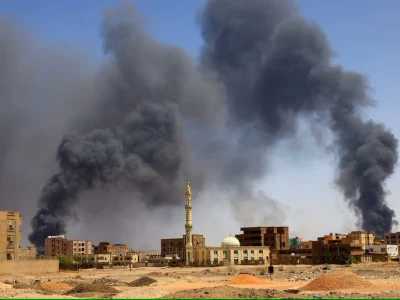
Heavy fighting in Khartoum; Sudan's children caught in conflict
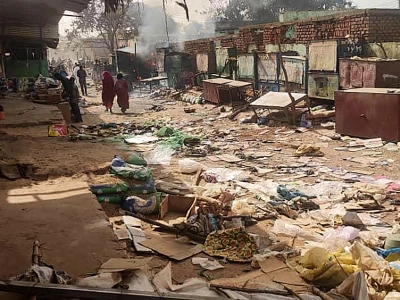
Random shelling kills 34 people, including children, in Sudan
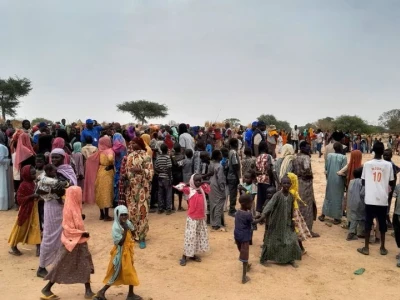
Sudanese civilians killed and shot at as they flee Darfur city
